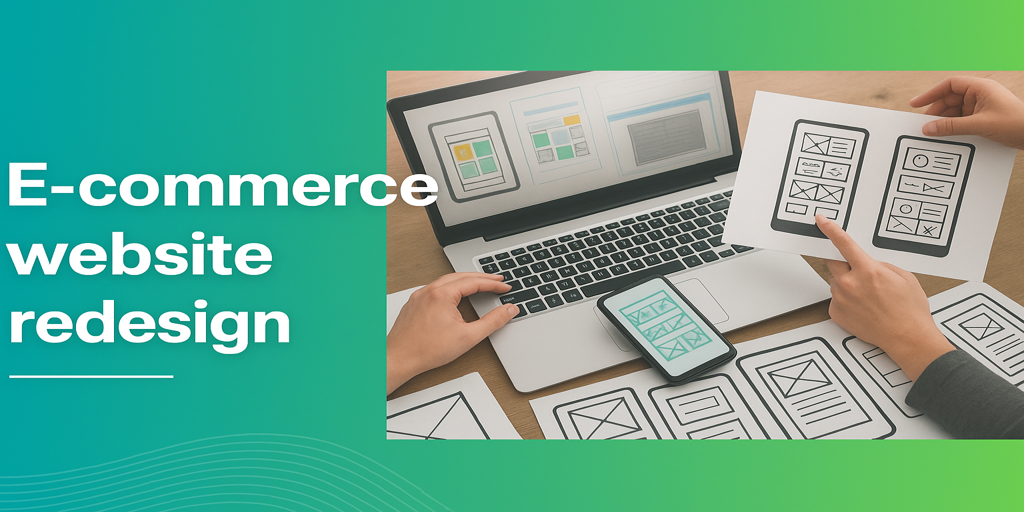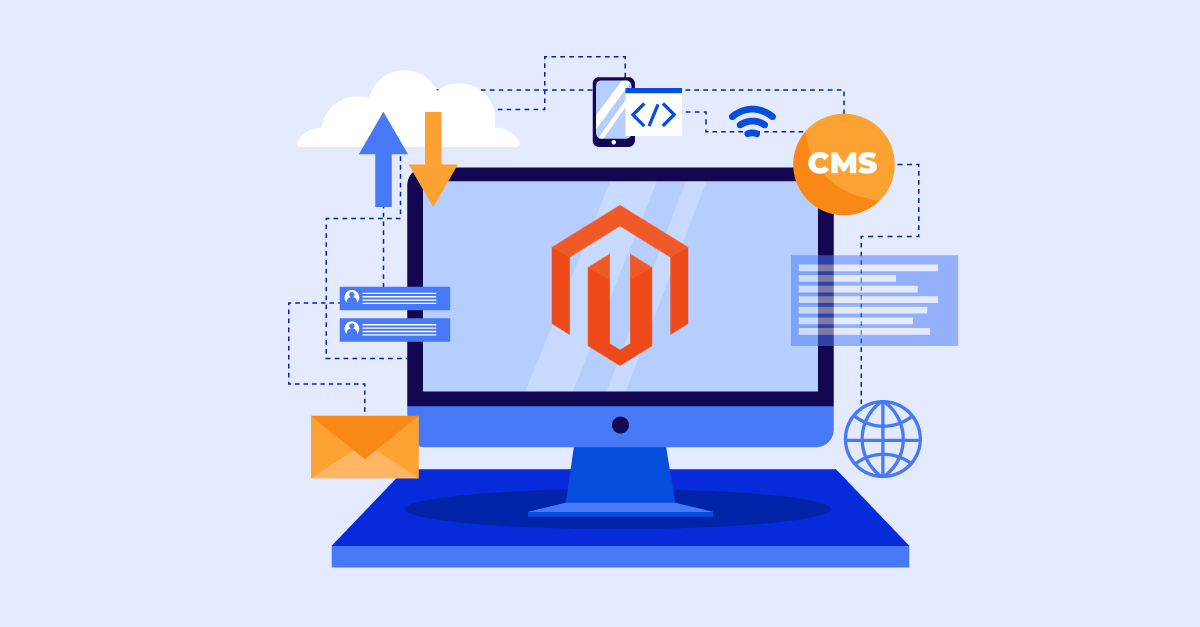
An e-commerce website redesign can be the smartest move you make for growth—or the most expensive mistake. A redesign is not just about new colours or a modern layout. Done right, it improves how customers shop, how fast pages load, and how many sales you close. Done wrong, it cuts traffic, hurts rankings, and confuses loyal buyers.
This guide explains the ten most common mistakes business owners make during an e-commerce website redesign and how to avoid them. Each mistake here comes from real experiences with stores that spent money but still struggled. Read carefully before you start.
What is an e-commerce redesign?
An e-commerce website redesign involves rebuilding your online store to improve performance for both your customers and your business. Sometimes it’s a complete rebuild. Other times, it’s enhancing key areas like product pages, mobile views, or checkout.
The purpose is simple—make your store easier to shop, improve conversions, and prepare it for marketing campaigns.
A successful website redesign impacts:
- how users move through the site
- how fast pages load
- how well your site ranks on search engines
- how easily you can run promotions or scale products
Done properly, an e-commerce redesign strengthens your sales funnel. Rushed, it breaks.
When is the right time to redesign your e-commerce website?
You may need an e-commerce website redesign if:
- Your site looks outdated compared to competitors
- Sales are flat or dropping despite traffic
- Mobile users struggle to shop
- The checkout feels slow or clunky
- SEO rankings keep sliding
- Your brand has grown, but the site no longer reflects it
If these sound familiar, you’re in the right place.
10 common e-commerce website redesign mistakes:
1. Skipping analytics before you start an e-commerce website redesign
Redesigning without checking your data is like flying blind. Google Analytics or similar tools tell you which pages bring traffic, where users leave, and how checkout performs.
If you ignore this, you risk deleting high-traffic pages or changing URLs that rank well. That means lost visitors and lost sales.
Before you change a single design element, review:
- top landing pages
- bounce rates
- devices used
- checkout drop-offs
This insight prevents costly missteps.
2. Ignoring current strengths and weaknesses in your redesign
Too many teams throw away what already works. Your product filters are great. Your navigation may be simple. A redesign should protect these strengths.
At the same time, identify pain points. Slow product images, hidden categories, or poor search must be fixed. Conducting a UX audit first saves money later.
3. Redesigning without clear goals
A store that “looks fresh” but fails to convert is a wasted effort. You need measurable goals such as:
- Reduce checkout steps
- Increase add-to-cart rate
- Speed up mobile loading
- Grow revenue from high-margin products
Without clear KPIs, your redesign may improve appearance but not business performance.
4. Not testing after launch
Many brands launch and walk away. That’s a mistake. A redesign is not an end—it’s the start of continuous testing.
Run A/B tests on checkout flows, product layouts, and call-to-action buttons. Track user behaviour for weeks after launch.
Without testing, you won’t know if the new design actually improves conversions—or makes them worse.
5. Confusing site structure during an e-commerce redesign
A messy site map leads to lost sales. If customers cannot find products in seconds, they leave.
Keep navigation clear. Group products logically. Use simple names instead of vague labels.
Good site architecture not only helps users but also improves SEO. Search engines crawl and rank your site based on its structure. Don’t hide your best products behind clutter during an e-commerce website redesign.
6. Weak homepage design
The homepage is often the first impression. If it fails, users won’t stay to see more.
Your homepage should clearly show:
- Who you are
- What you sell
- Why shoppers should trust you
Highlight your bestsellers, seasonal offers, and trust signals like reviews. Avoid overwhelming people with too many banners or pop-ups.
7. Poor product pages in your website redesign
Product pages are where decisions happen. Weak pages equal lost sales.
Shoppers want:
- High-quality photos from multiple angles
- Product details (size, material, ingredients)
- Clear prices and shipping info
- Customer reviews
If any of these are missing, users hesitate. Data shows that unclear details are a leading cause of cart abandonment. Invest in strong product content—it pays back quickly.
8. Forgetting to build trust
Even the best-looking site won’t convert if shoppers don’t trust it.
Make sure your store shows:
- Visible SSL security
- Clear return policy
- Upfront shipping costs
- Recognised payment gateways
- Verified reviews
Without these, visitors doubt your store’s credibility. Trust should be visible at every step, from homepage to checkout.
9. Complicated checkout and cart
Checkout is where money is made—or lost. Too many steps, hidden costs, or errors stop buyers cold.
Keep forms short. Show shipping fees early. Offer guest checkout. Make sure the order summary is clear.
Studies show nearly 70% of carts are abandoned. Fixing checkout friction is one of the fastest ways to boost revenue.
10. Not optimizing for mobile
Most e-commerce traffic now comes from mobile. If your site looks perfect on desktop but breaks on a phone, you’re losing sales.
Mobile shoppers want fast load times, large buttons, and smooth navigation. Test every redesign on multiple devices before launch.
A mobile-first approach is no longer optional—it’s survival.
Final thoughts
An e-commerce website redesign can fuel growth or drain resources. The difference comes down to preparation. Avoid these ten mistakes and you’ll protect rankings, improve conversions, and give customers a smoother experience.
Start with data. Protect what already works. Set clear goals. Test everything. Keep the structure clean and checkout simple. Above all, remember mobile users.
A redesign is not just a new look. It’s a business investment. Done with care, it pays off in higher sales and stronger brand trust.
Frequently Asked Questions:
1. Why should I redesign my e-commerce website?
Redesigning your e-commerce website is not just about changing how it looks—it’s about improving the overall shopping experience. As online shopping grows, customer expectations keep rising. A redesign can make your site faster, easier to navigate, and mobile-friendly, which helps reduce bounce rates and increase sales.
If your website looks outdated, customers may not trust it, no matter how good your products are. Redesigning also gives you the chance to add modern features like advanced search filters, personalized product recommendations, and secure checkout.
From an SEO perspective, a redesign can help improve search rankings by fixing technical issues and optimizing content.
2. How often should an e-commerce site be redesigned?
There isn’t a fixed rule for how often an e-commerce site should be redesigned, but most businesses update their sites every 2–3 years. This timeline usually matches changes in design trends, customer expectations, and technology updates.
However, if you notice problems like slow loading times, high cart abandonment, poor mobile experience, or declining sales, then it’s a sign you need a redesign sooner. Regular updates don’t always mean a complete overhaul—you can refresh parts like your homepage, product pages, or checkout process.
If your site still feels modern, functions smoothly, and meets customer needs, a full redesign may not be necessary.
3. What mistakes should I avoid during a redesign?
When redesigning your e-commerce site, one common mistake is focusing only on visuals and ignoring functionality. A beautiful design means little if customers can’t easily find products or complete checkout.
Another mistake is not making the website mobile-friendly, especially since most shoppers now browse on smartphones. Businesses also sometimes forget about SEO during redesigns—removing pages, changing URLs, or ignoring keywords can harm search rankings. Adding too many features at once can slow down the site, frustrating users.
Another pitfall is skipping user testing, which helps uncover issues before launch. Some companies also forget to migrate customer data, reviews, or order history, which can affect trust and loyalty.
4. How does website speed affect sales and conversions?
Website speed directly impacts user experience, sales, and conversions. Research shows that most users expect a site to load within 2–3 seconds, and even a one-second delay can reduce conversions significantly. If your e-commerce site is slow, customers may leave before even seeing your products, leading to lost sales.
A fast-loading site also helps reduce cart abandonment rates, especially during checkout, where delays can frustrate buyers. Beyond user experience, speed is also an SEO ranking factor, meaning search engines reward faster sites with better visibility.
Speed improvements such as compressing images, using a reliable hosting provider, and reducing unnecessary scripts can make a big difference. In today’s competitive online market, a fast website shows professionalism, builds trust, and keeps customers engaged.
5. How can I ensure my redesigned site improves user experience?
Improving user experience starts with understanding what your customers need. Before redesigning, review analytics and customer feedback to identify pain points such as difficult navigation or slow checkout. Focus on creating a clean layout with clear product categories and an easy-to-use search function.
Ensure the site is responsive so customers have a seamless experience on mobile, tablet, and desktop. The checkout process should be simple, requiring as few steps as possible, with secure payment options.
Adding customer reviews, product recommendations, and high-quality images also improves trust and engagement. Accessibility is another factor—your site should be usable by people with disabilities, which also helps compliance.


